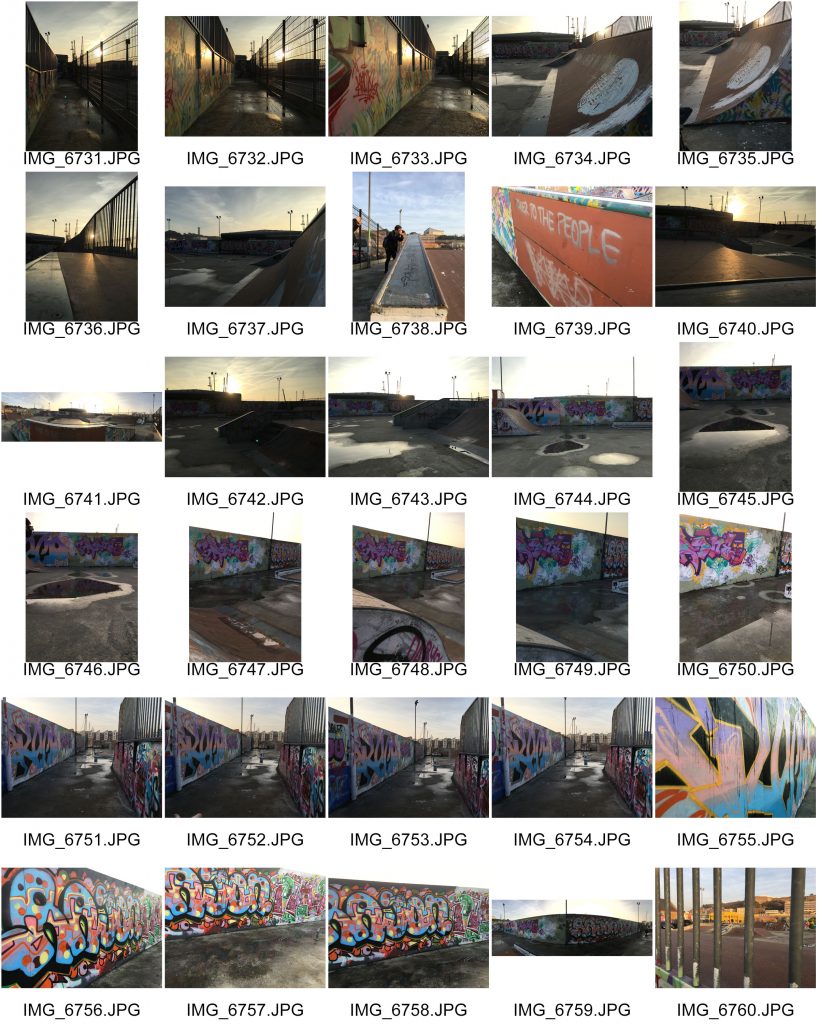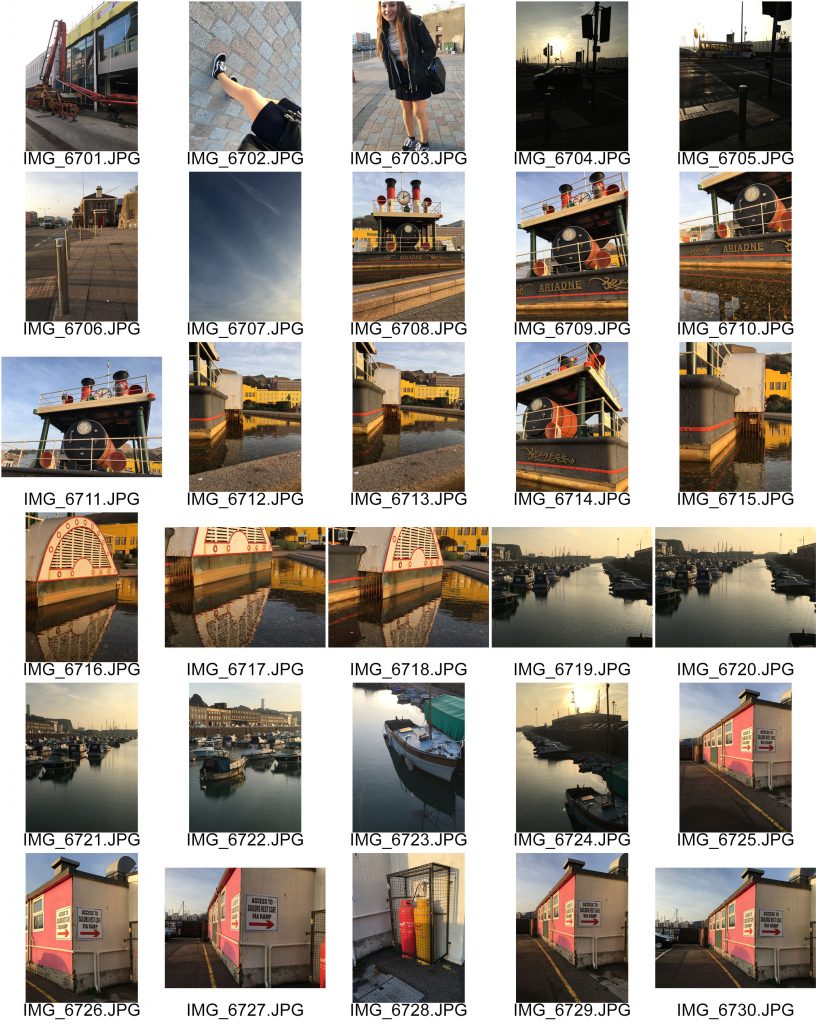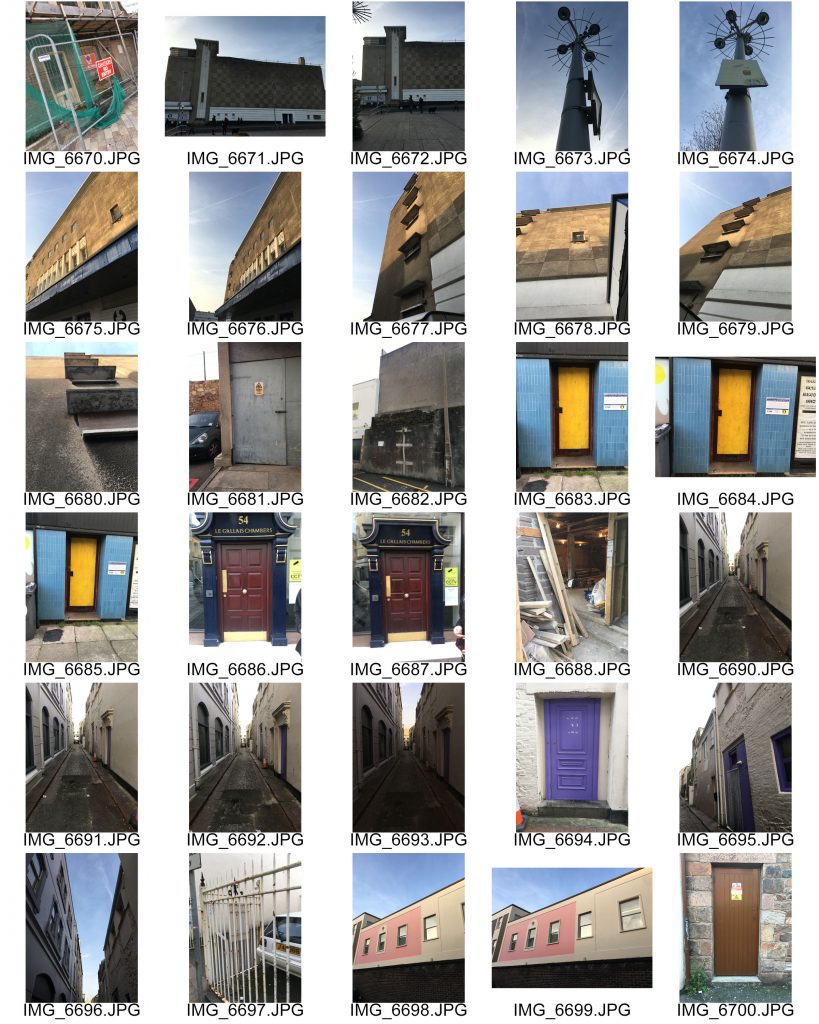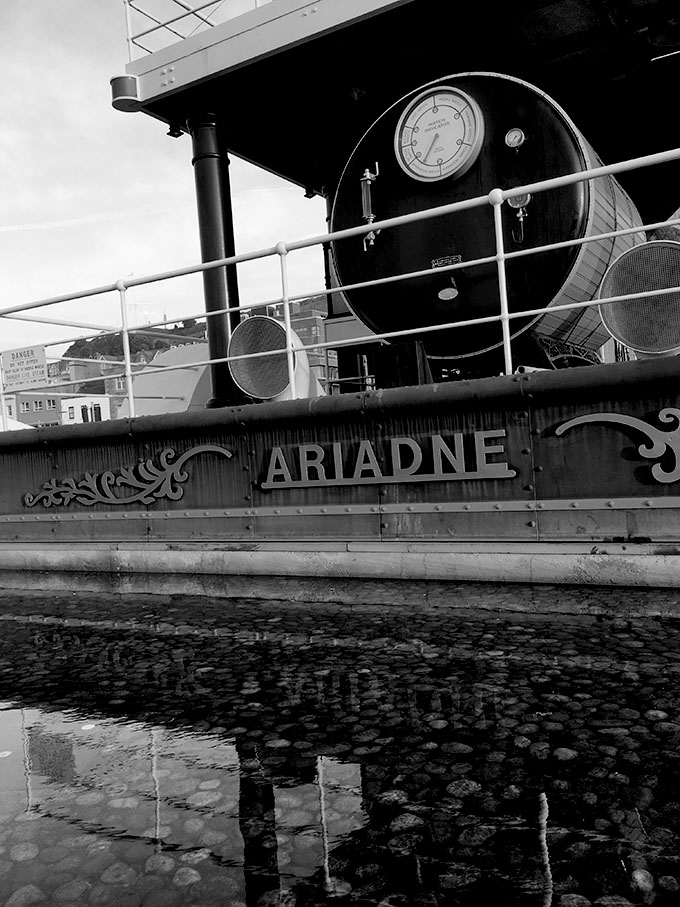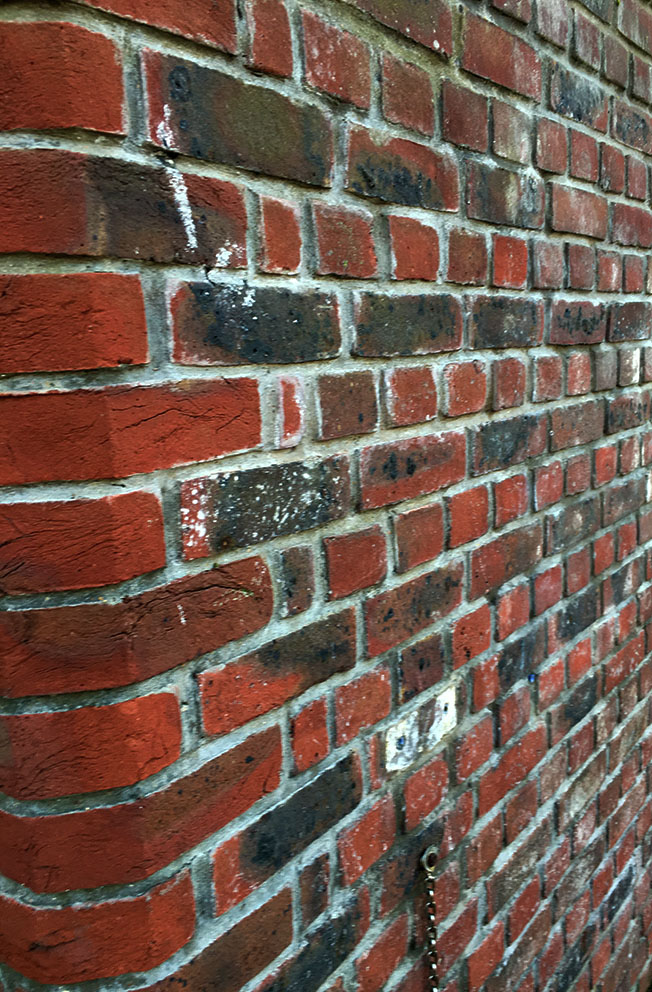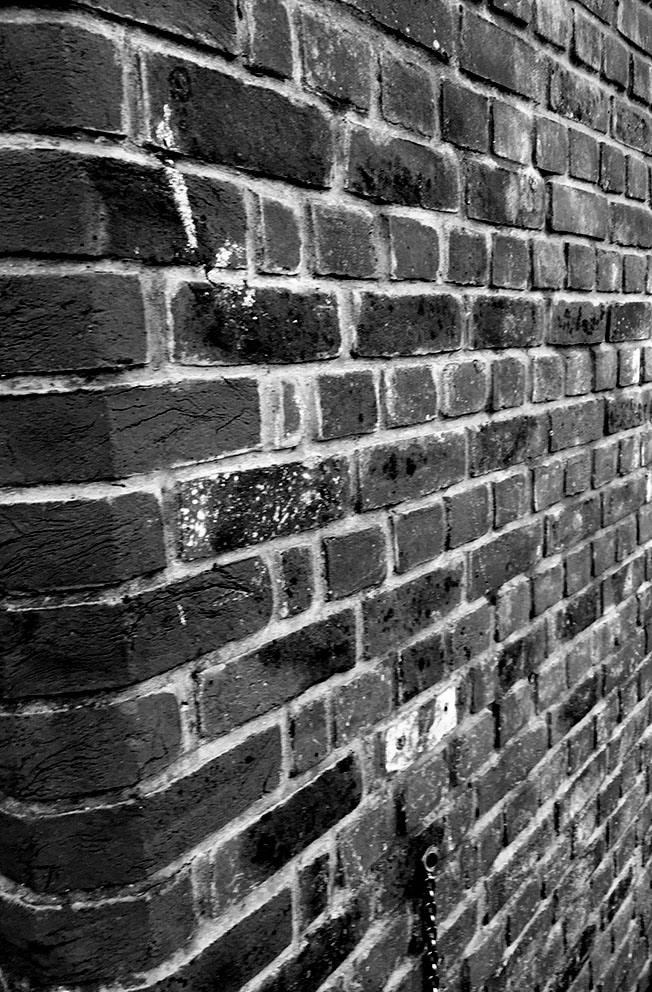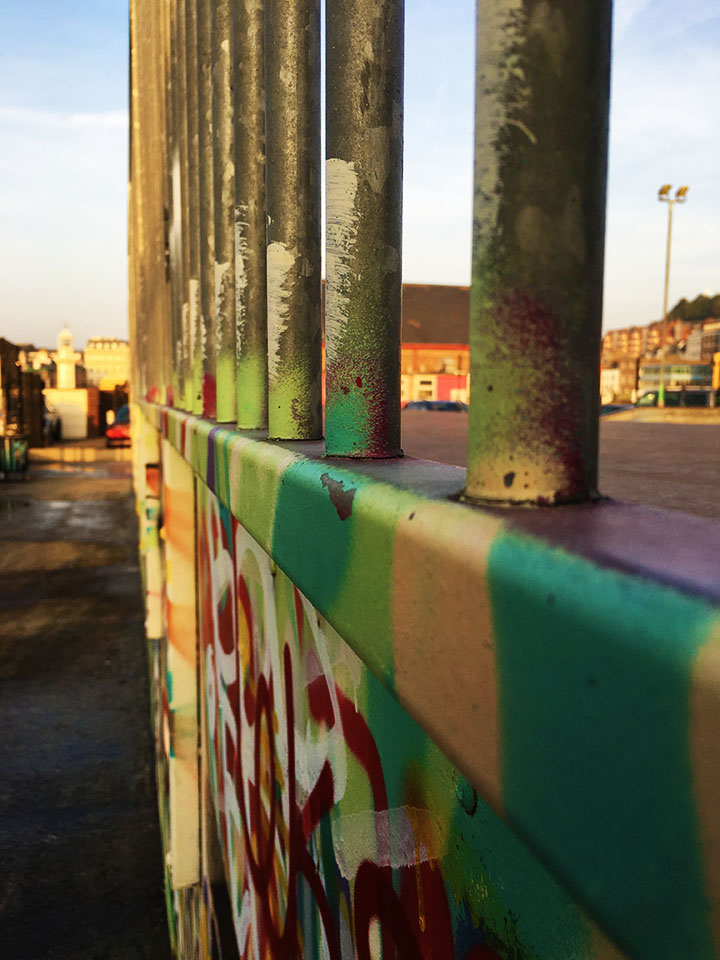// BEST EDIT //
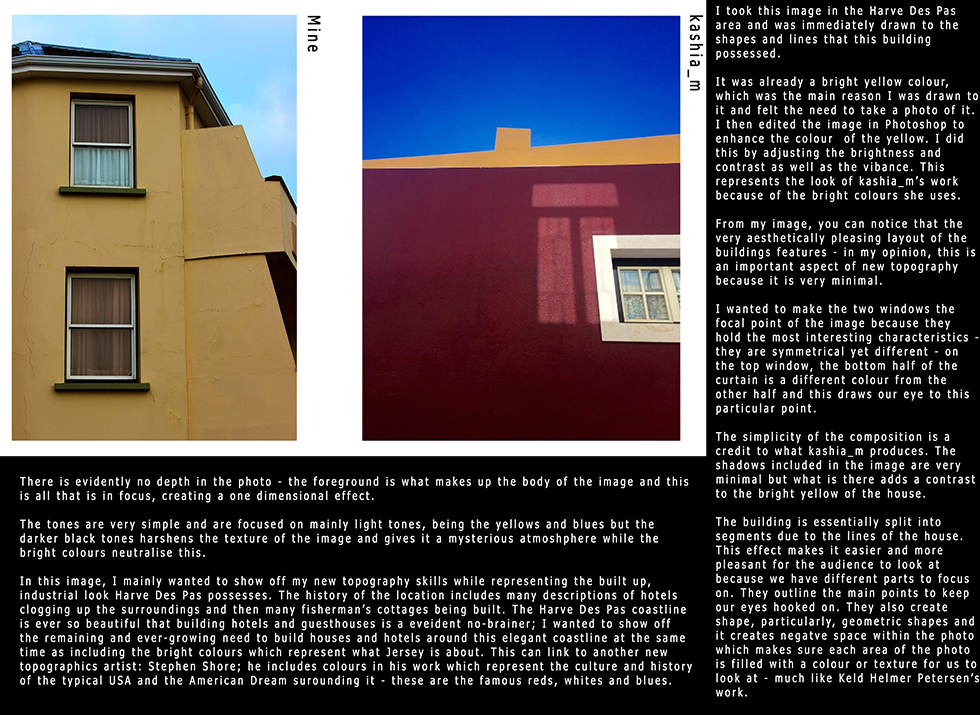
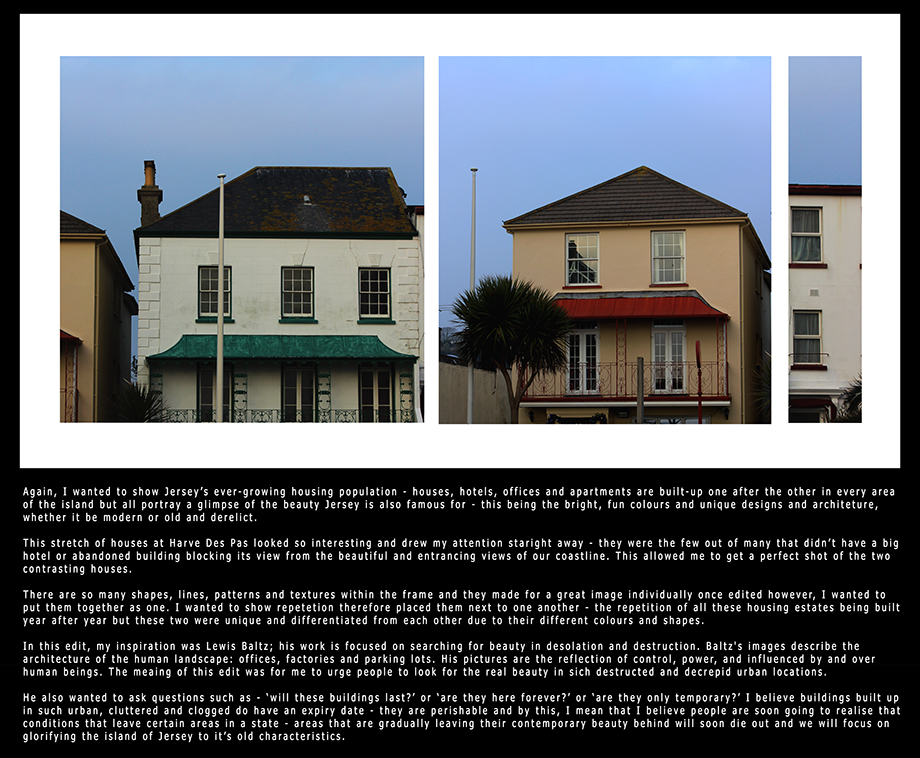
Daily Archives: December 16, 2016
Filters
Harve Des Pas : Originals X Edits
Here are the images which I feel turned out best out of the diverse selection from the walk around Harve Des Pas. I also edited some of them too and they are below. The images consist of a range of the styles: abstract, new topographics and Ansel Adams/Mark Citret. 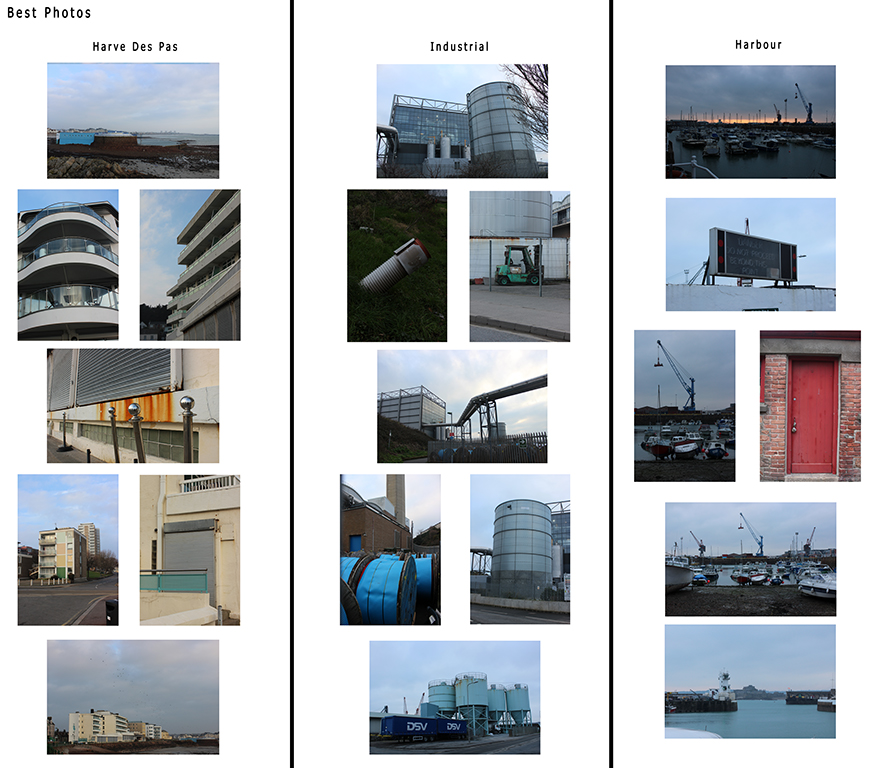
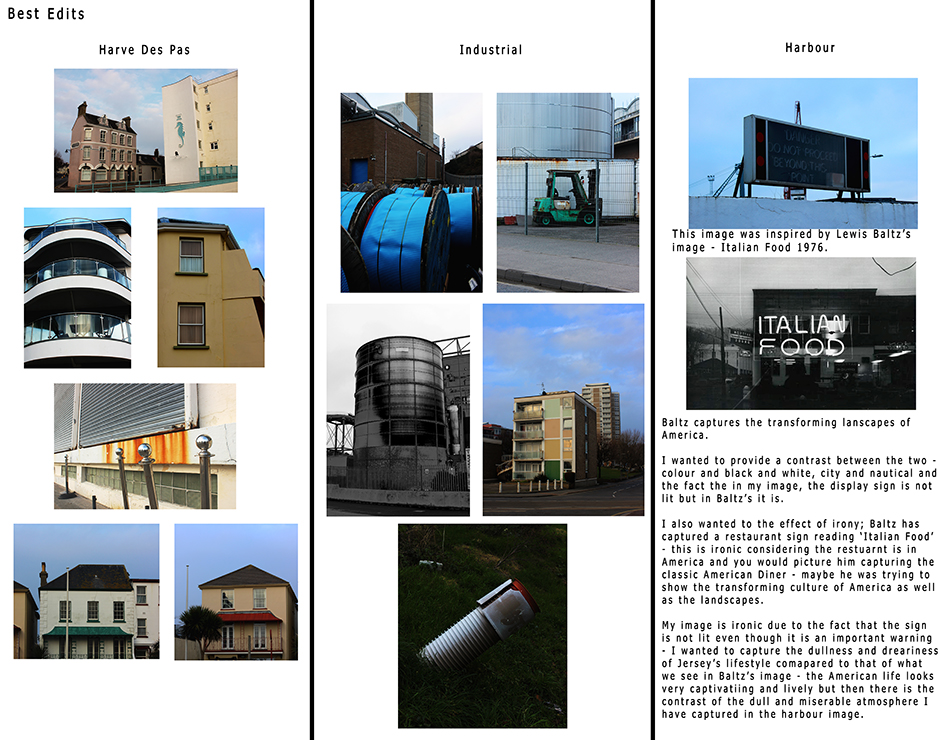
Harve Des Pas Walk

New Topographics
New Topographics is photographs of a Man-Altered Landscape” was an exhibition that epitomized a key moment in American landscape photography.

It is 35 years since the term “new topographics” was coined by William Jenkins, curator of a group show of American landscape photography held at George Eastman House in Rochester, New York. The show consisted of 168 rigorously formal, black-and-white prints of streets, warehouses, city centres, industrial sites and suburban houses. Taken collectively, they seemed to posit an aesthetic of the banal.
“What I remember most clearly was that nobody liked it,” Frank Gohlke, one of the participating photographers told the LA Times when the exhibition was restaged last year at the LA County Museum of Art. “I think it wouldn’t be too strong to say that it was a vigorously hated show.”
The exhibition’s clunky subtitle was “Photographs of a Man-Altered Landscape”, which gave some clue as to the deeper unifying theme. What Jenkins had identified in the work of US photographers such as Gohlke, Robert Adams,Stephen Shore, Lewis Baltzand Nicholas Nixon was an interest in the created landscapes of 70s urban America. Their stark, beautifully printed images of this mundane but oddly fascinating topography was both a reflection of the increasingly suburbanised world around them, and a reaction to the tyranny of idealised landscape photography that elevated the natural and the elemental. In one way, they were photographing against the tradition of nature photography that the likes of Ansel Adams and Edward Weston had created.
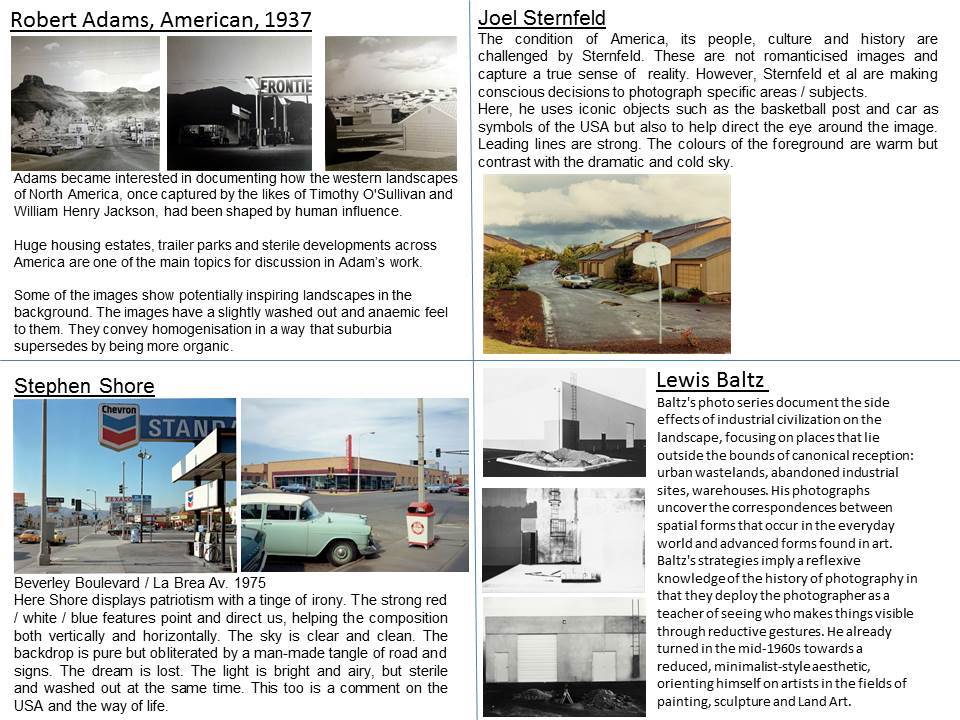
Stephen Shore
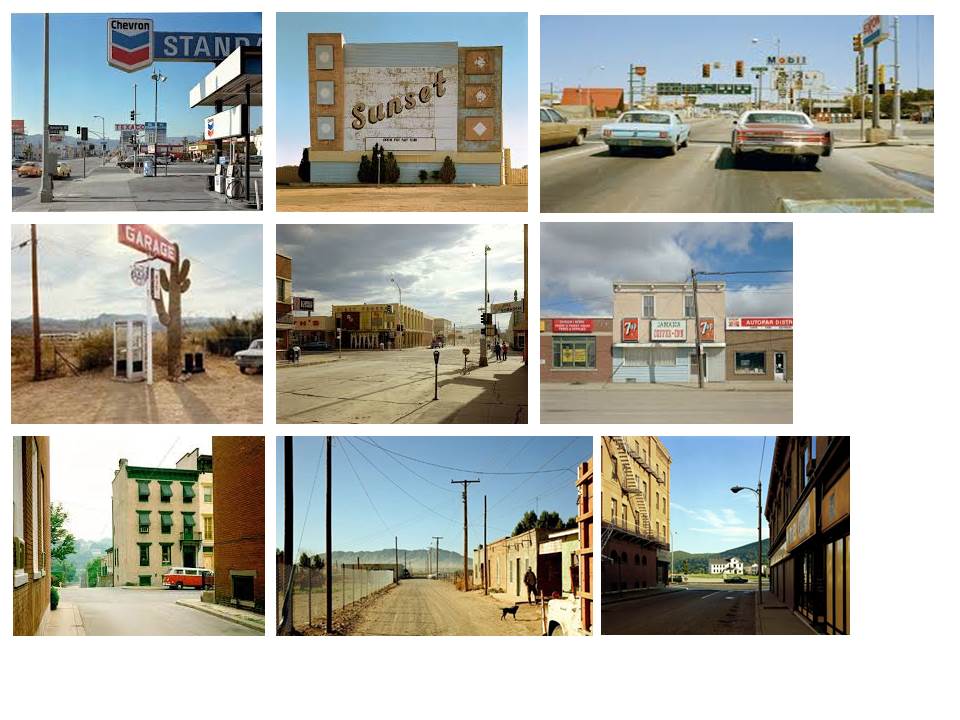
Biography:
Stephen Shore was born on October 8, 1947. He is an American photographer known for his images of banal scenes and objects in the United States, and for his pioneering use of color in art photography. In 2010, Shore received an Honorary Fellowship from The Royal Photographic Society.
Stephen Shore’s photographs are attentive to ordinary scenes of daily experience, yet through color–and composition–Shore transforms the mundane into subjects of thoughtful meditation. A restaurant meal on a road trip, a billboard off a highway, and a dusty side street in a Texas town are all seemingly banal images, but upon reflection subtly imply meaning.
Although Shore has taught photography (he has been director of photography at Bard College since 1982) he became well known at an early age as a pioneer of color art photography. He is among the earliest fine art photographers to work almost exclusively in color. Shore became interested in photography as a child: Between the ages of six and ten he taught himself how to expose and print photographs. Walker Evans’s book, American Photographs, made a big impression. At fourteen, the precocious teenager telephoned Edward Steichen, the photography curator of the Museum of Modern Art. They arranged a meeting, and Steichen purchased three of Shore’s photographs for the museum’s permanent collection. And at sixteen he met Andy Warhol and frequented the artist’s studio, photographing the illustrious scene at the “Factory.” In 1972 Shore embarked on a series of cross-country trips and made “on the road” color photographs of American landscapes.
Color photography attracted Shore for its ability to record the range and intensity of hues seen in life. In 1971, at age twenty-three, he became the first living photographer to have a one-person show at the Metropolitan Museum of Art, New York. His 1982 book, Uncommon Places became a bible for young photographers seeking to work in color, because, along with that of William Eggleston, his work exemplified the fact that the medium could be considered art.
Image Analysis

My interpretation of ‘New Typographics’
for this photo shoot i used inspiration from all of the new typography artists and photographers that i have looked at and then gone out to take images from around town. i walked from Hautlieu School around the side streets or town and then down and around the harbor. i manages to capture some interesting images of urban streets. I also captured images of doors and different coloured doorways which i will use i a later study on Typology.
Whilst capturing and editing these images i thought about what i have previously researched about Ansel Adams and the Zone System and tried to apply my knowledge of using the settings and adjustments to get black and white images that show all or most of the zones in the system. i also edited some of the images so that they had high contrast and bright vibrance in the colours to show the colour in jerseys streets.


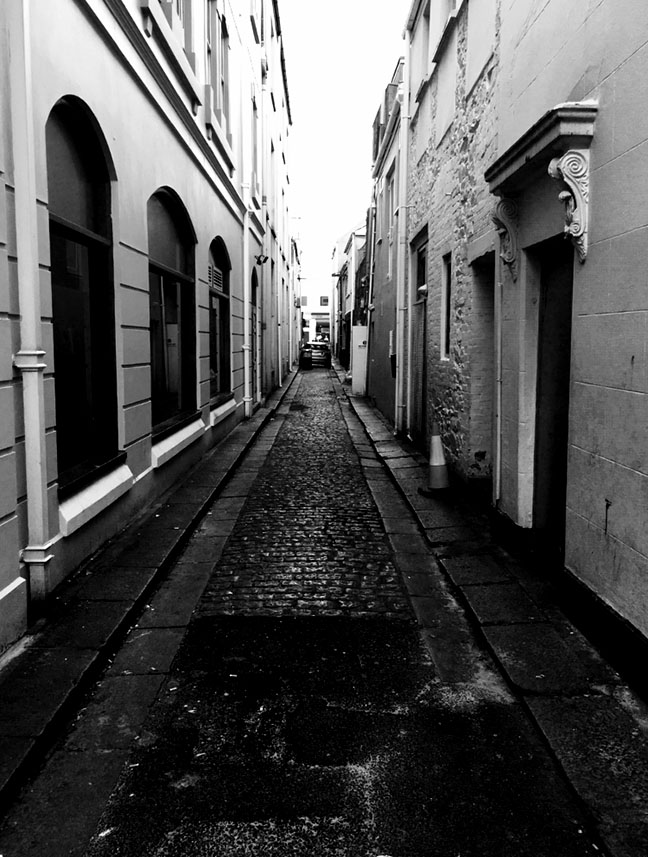

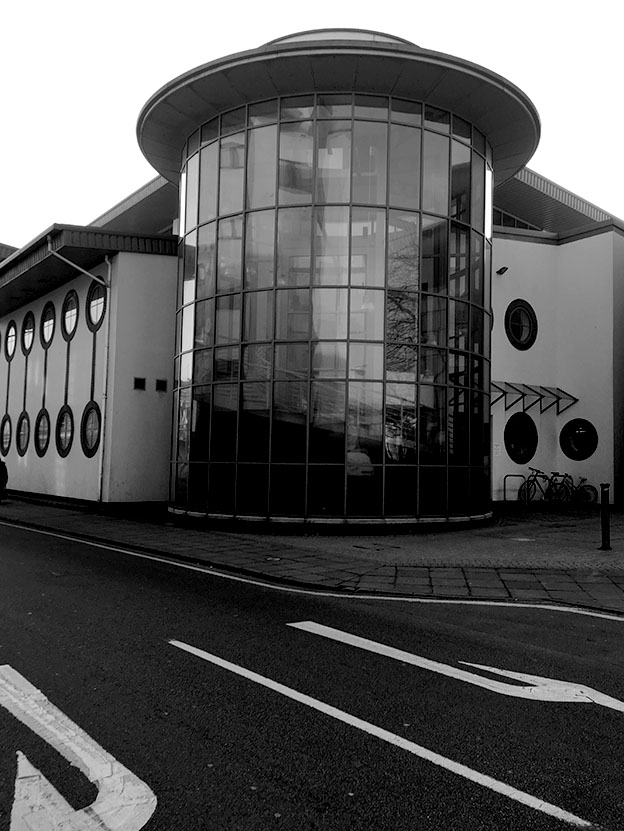
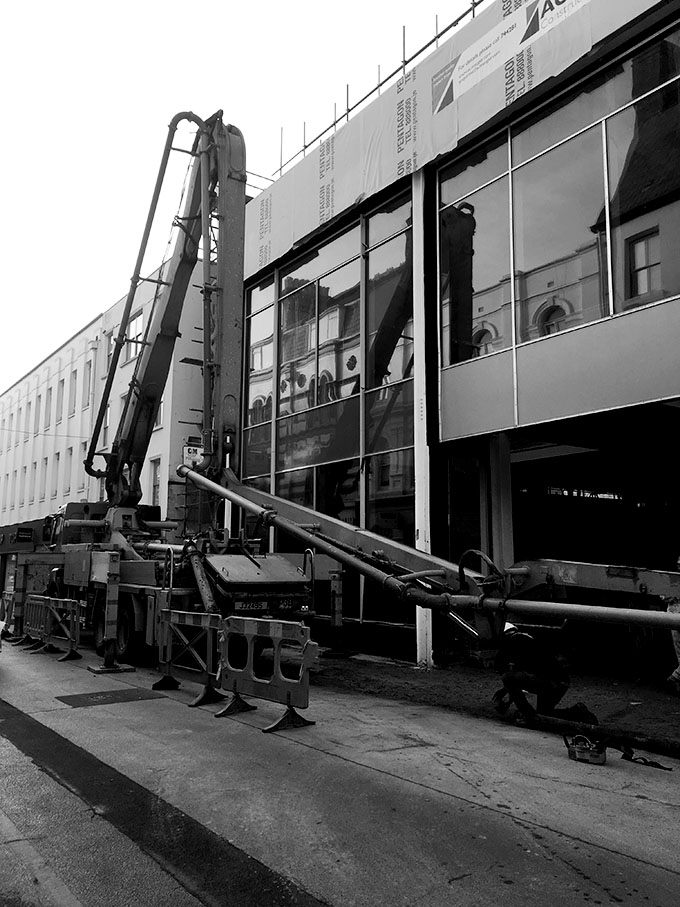

Shoot 2-
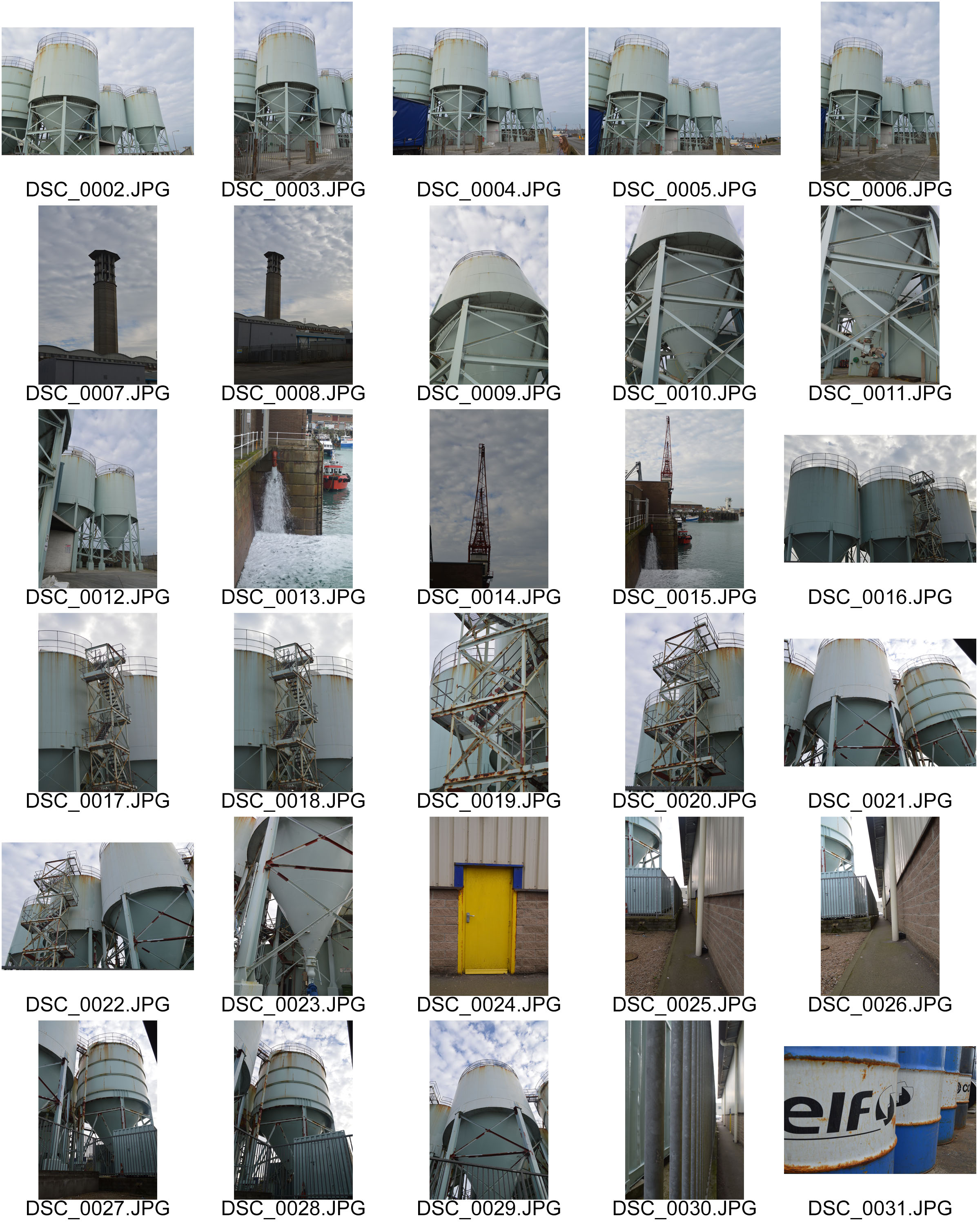

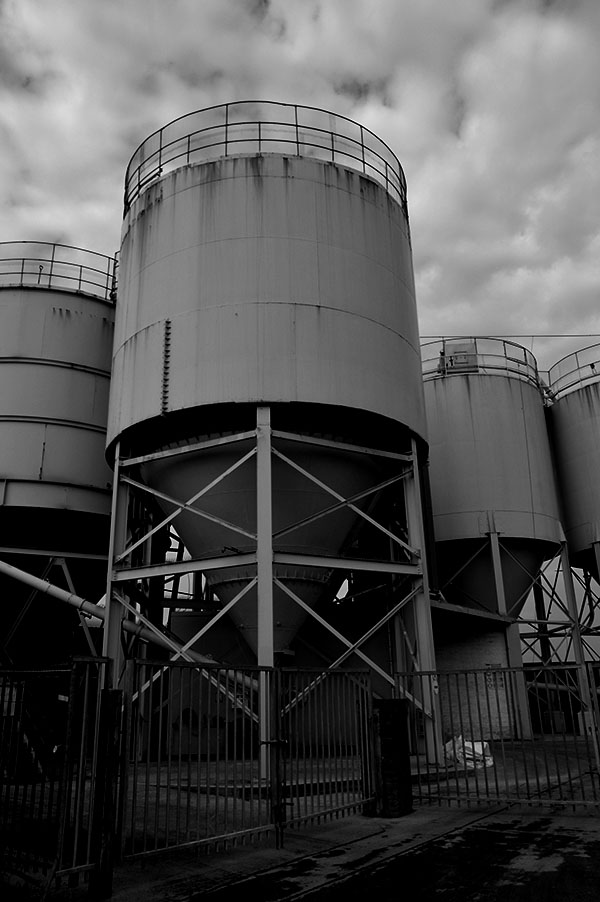









Evaluation
I think that both of these shoots both the town based shoots and the the more industrial shoots were successful i think that i managed to capture urban landscapes of my town in the style of topographics. i collected a range of image which show man made elements of the environment. i experimented both with Ansel adams Zone system trying to get edits which included a vast tonal range but also a more modern topographic style of bright colours in the urban environment.
Landscape Photography: Ansel Adams
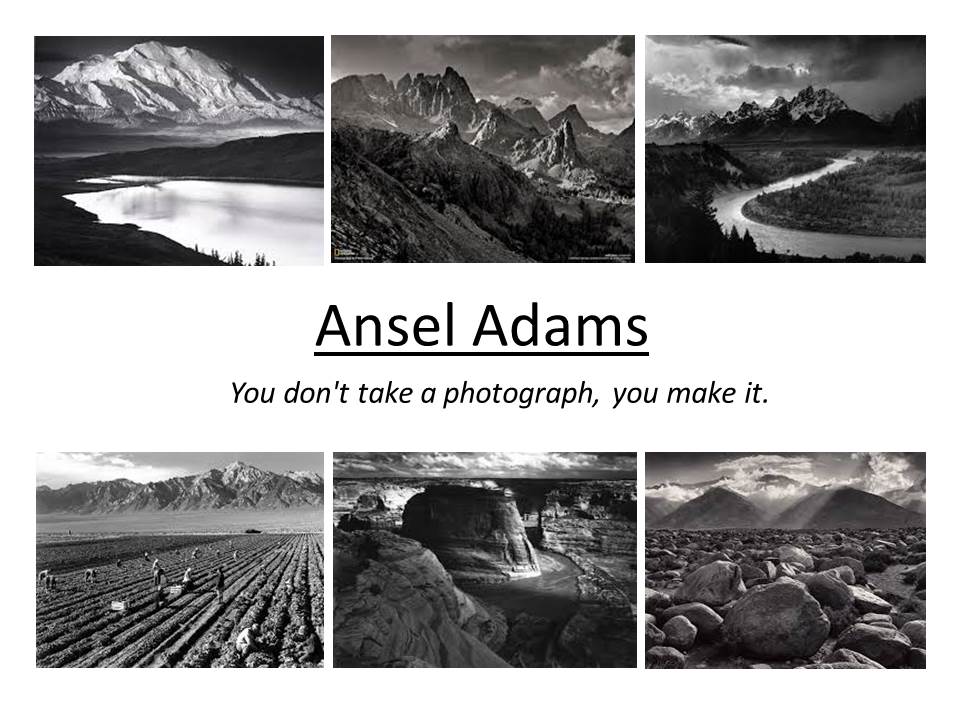
Biography:
Ansel Adams was born on the 20th of February 1902 and died April 1984. He was born in San Francisco, California and his life’s work was based on being a photographer and an environmentalist. He focused his photography on black and white landscape photographer of the American west where he especially photographed the Yosemite National Park. During Adams life time he and Fred Archer developed the zone system which was a technique in photography to determine proper exposure and adjust the contrast of the final print. The resulting clarity and depth characterized his photographs to being inspirations of today’s photography. He mainly used large format cameras because that had a high resolution which helped to ensure sharpness in his image.
The very nature of romanticism in his images is rather unpredictable and uncontrollable. At other times quiet a sensual power manifests into beautiful and stunning photographs. Sometimes his images feature humans and animals while at other times the landscapes will be empty and bare of any form of life. The most notable feature in a landscape image of romantic quality is that it will stir the emotion and feelings and cause inspiration of imagination.
It is very noticeable in Adams work that there is a sentimental feeling to his work which cleverly portrays romanticism. He does this through the use of soft lighting as well as photographing beautiful landscape which makes anyone looking at the image feel some like of emotion to it. Looking at his work it is clear through the difference in landscapes that there is a current theme running through his work, not only are the photographs in black and white but he captures images almost in the perfect angle or position creating beautiful composition which shows the true beauty of landscapes.
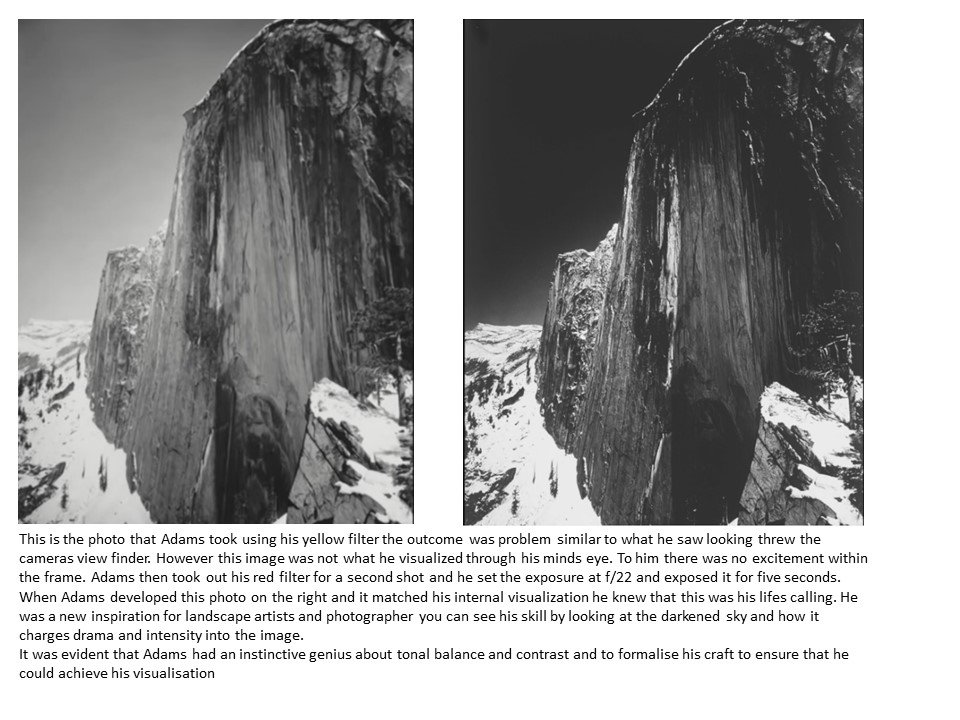
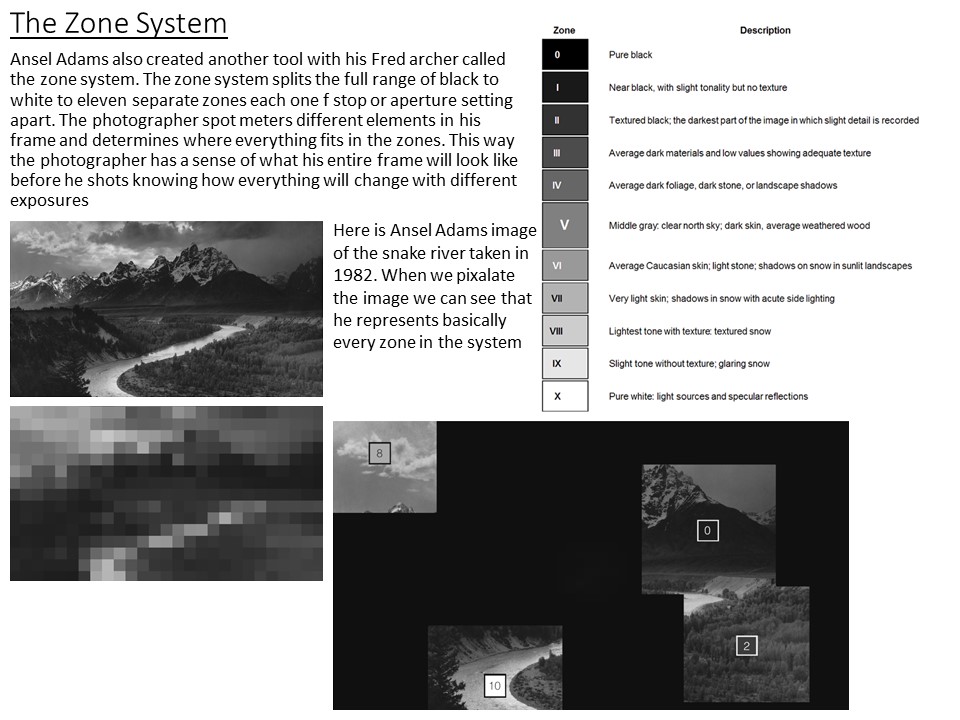

Analysis
There is a definite beauty within all of Adams images however this image is the one that i have the strongest emotional response to. i think this is due to the remarkable tonal range which gives the image a sense of drama but then the soft light grey tones of the curved river running through the image brings calmness to the image and makes the photo so interesting to look at. Adams image are not famous and world known because he managed to capture a good image it is because of the effort and determination he had to create pieces of art which captured what he could see with his minds eye. The way the image has tones from bright white to nearly compleatly black and almost every tone in between is due to his skill and understanding which makes the images so life like and truely make his work some of the best romanticism images there has ever been. the winding river takes your eyes through the image on a journey and makes you look at every aspect of the image. the rest of the bottom half of the image which is darker than the river acts as a frame, how nature frames natural elements.
Experimenting with lighting, Contrast and the Zone System
I used a white infinity background and the pieces of paper to try and make a landscaped image that i could practice trying to include every zone in the system to make the image have good contrast. in the images i used natural light coming from a window from the right of the paper. I think that the images were successful and i managed to include quite a lot of the zones
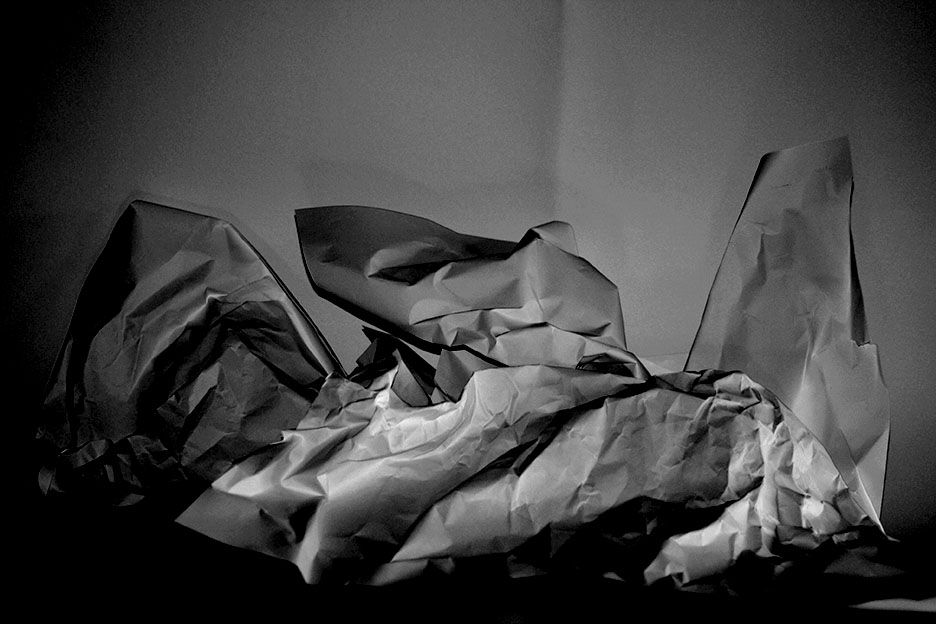


Landscape Photography: Edward Weston

Biography
20th-century American photographer Edward Weston was born on 24th March, 1886 and died on the 1st of January, 1958. He has been called one of the most innovative and influential American photographers and one of the masters of 20th century photography. Over the course of his 40-year career Weston photographed an increasingly expansive set of subjects, including landscapes, still lifes, nudes, portraits, genre scenes and even whimsical parodies. It is said that he developed a quintessentially American, and specially Californian, approach to modern photography because of his focus on the people and places of the American West. In 1937 Weston was the first photographer to receive a Guggenheim Fellowship, and over the next two years he produced nearly 1,400 negatives using his 8 × 10 view camera. Some of his most famous photographs were taken of the trees and rocks at Point Lobos, California, near where he lived for many years. Weston was born in Chicago and moved to California when he was 21. He knew he wanted to be a photographer from an early age, and initially his work was typical of the soft focus pictorialism that was popular at the time. Within a few years, however, he abandoned that style and went on to be one of the foremost champions of highly detailed photographic images. In 1947 he was diagnosed with Parkinson’s disease and he stopped photographing soon thereafter. He spent the remaining ten years of his life overseeing the printing of more than 1,000 of his most famous images.
Image Analysis
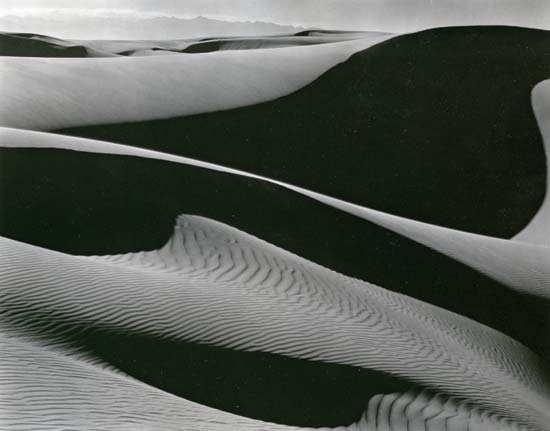
Edward weston seems to capture similar imags to those of Ansel adams however there are differences to Westons work which makes his work sometimes more harsh. In particular in this image you can see that hisimage dont have as big of a tonal range as ansel adams images do. Although Weston images are massively contrasting between light and dark his images mainly create this by the use of very dark tones of black almost pure black and then grey tones. This shows us that Weston does not follow the zone system created by Adams. Edward weston in my opinion shows romanticism and what the eyes sees in a different yet still beautiful and captivating way, he uses the use of patterns and lines which lea us around the imag and almost take us on a colouring. It is almost as he uses each curved line in this image as a different section and tone of grey or black. The ripples throughou show consistency through the image which makes it appealing to look at and gives the image the calmness and natural beauty of romanticism images.


